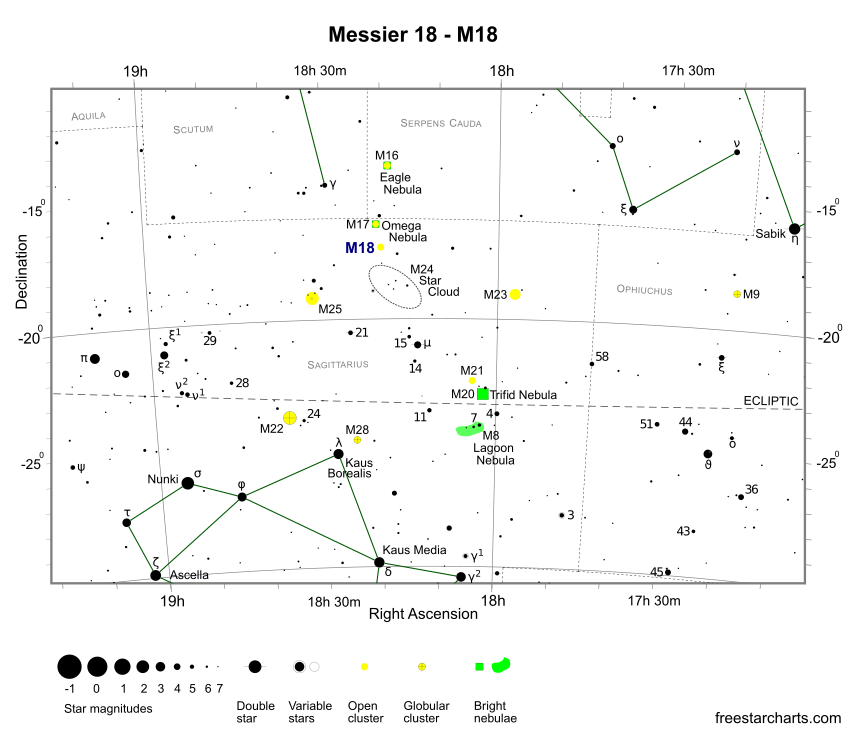M18 is a small open cluster located among the rich Milky Way star fields of Sagittarius. With an apparent mag. of +7.5, it's easily visible with popular 7x50 or 10x50 binoculars appearing as a somewhat dim hazy patch of light. The cluster was one of Charles Messier's original discoveries, which he catalogued on June 3, 1764.
M18 can be found not far from the teapot asterism of Sagittarius. It's positioned 8.5 degrees north and a little west of Kaus Borealis (λ Sgr - mag. +2.8), the teapot's top star. The surrounding region of sky is a wonderfully rich area for astronomers that's filled to the brim with numerous open clusters, globular clusters and nebulae. Two prominent examples are the Omega Nebula (M17) and the sprawling Sagittarius Star Cloud (M24). They are positioned one degree north and two degrees south of M18 respectively, with all three objects visible in the same binocular field of view.


Finder Chart for M18 - pdf format (credit:- freestarcharts)

Finder Chart for M8 (also shown M6, M7, M18, M20->M24, M28, M54, M55, M69 and M70) - pdf format
M18 is best seen with binoculars and small scopes. A small 80mm (3.1-inch) refractor easily shows the brightest dozen white / blue-white stars, with additional fainter members visible with averted vision. They appear loosely arranged in an area that spans 9 arc minutes in diameter. In total, M18 contains 20 stars. However, in larger scopes it's not as impressive due to its lack of concentration.
M18 is best seen from southern and equatorial regions during the months of June, July and August. The cluster is located 4,900 light-years from Earth, which corresponds to an actual diameter of 13 light-years. With an estimated age of 32 million years, it's a youthful star grouping.
M18 Data Table
| Messier | 18 |
|---|---|
| NGC | 6613 |
| Object Type | Open cluster |
| Constellation | Sagittarius |
| Distance (light-years) | 4,900 |
| Apparent Mag. | +7.5 |
| RA (J2000) | 18h 19m 58s |
| DEC (J2000) | -17d 06m 07s |
| Apparent Size (arc mins) | 9.0 x 9.0 |
| Radius (light-years) | 6.5 |
| Age (years) | 32 Million |
| Number of Stars | 20 |
| Other Name | Collinder 376 |